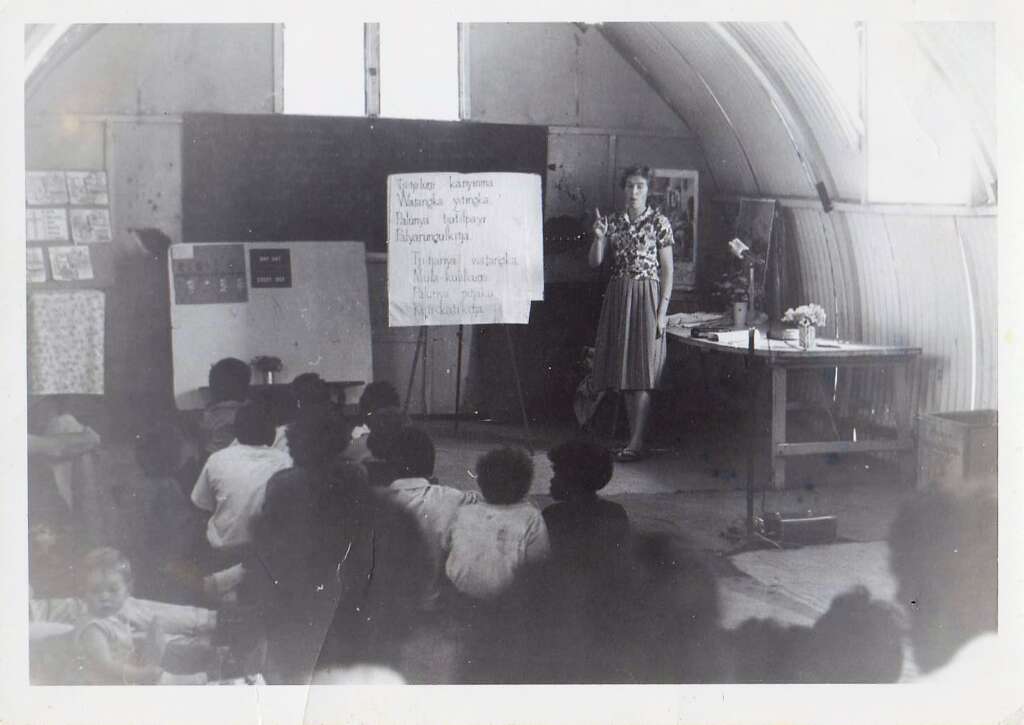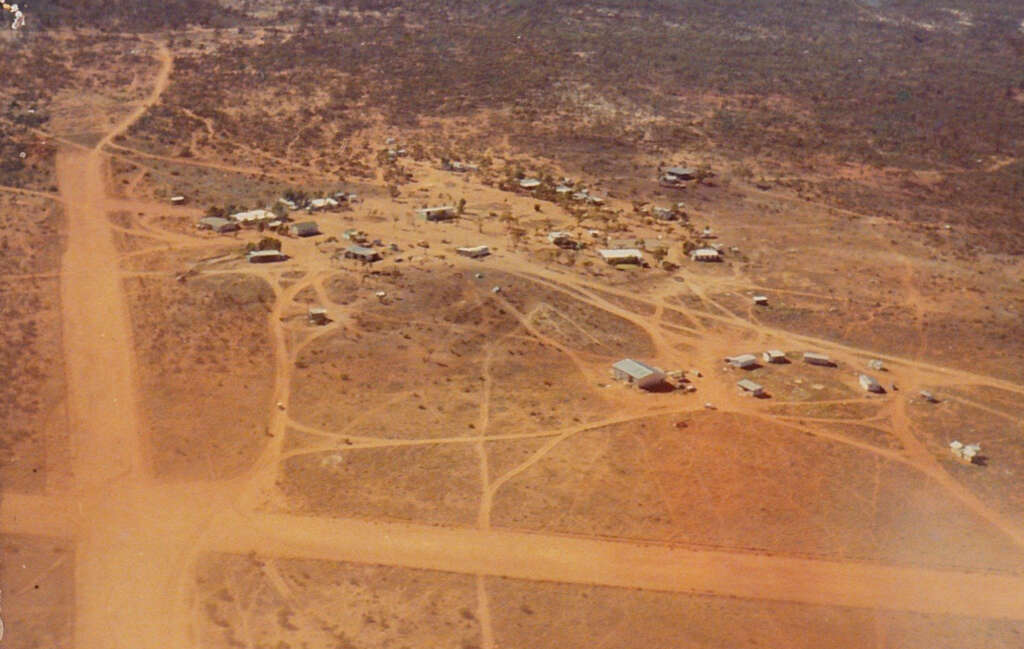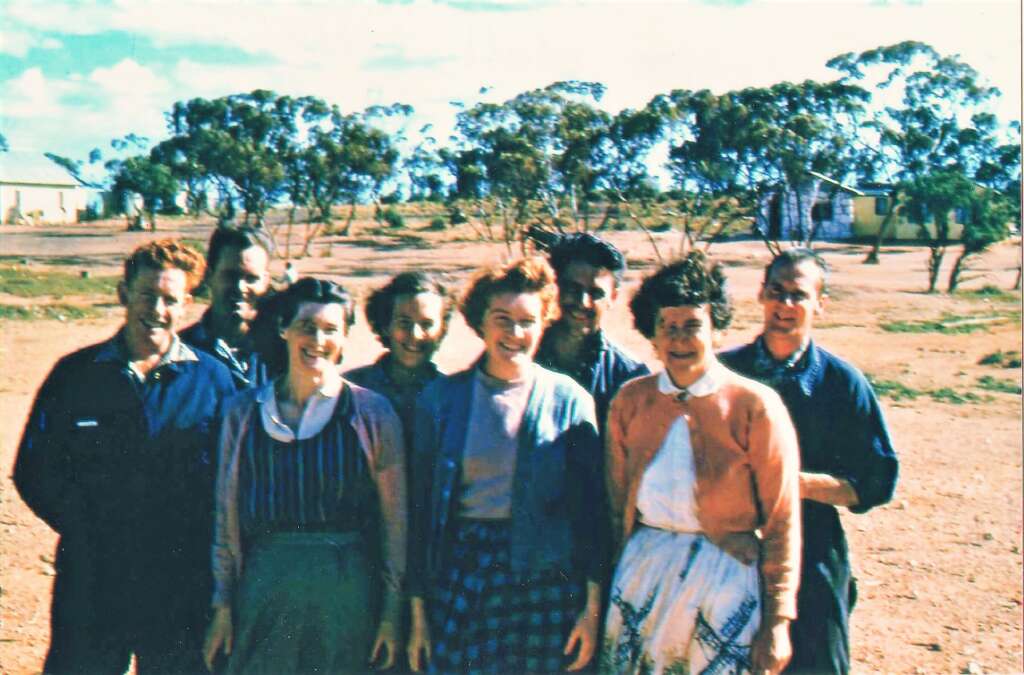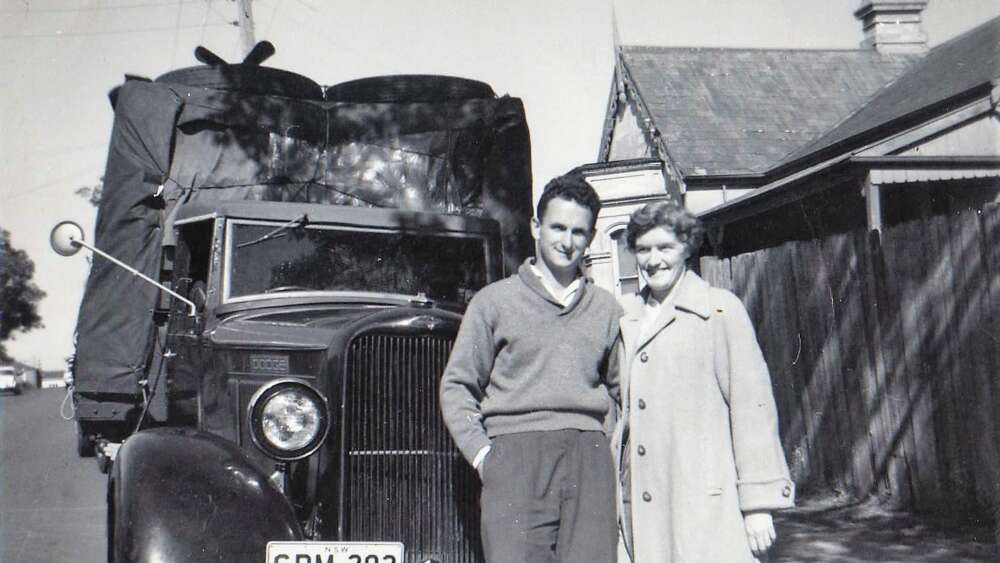This couple spent 60 years in the desert – in the name of God
Part 1: Cundeelee Mission Station
Brian and Dawn Hadfield began their marriage in the middle of nowhere, and that’s where they felt called to stay.
Their lifelong connection with each other and the local Aboriginal peoples started on a remote outback mission station on the fringes of the Western Desert in WA.
86-year-old Brian tells Eternity about his epic life story, along with Dawn (now 85) over a phone line from his current home in Kalgoorlie.
Cundeelee Mission Station – almost 800km east of Perth and 250km east of Kalgoorlie – was first established as a government “ration depot”, and became an Australian Aboriginal Evangelical Mission station around 1949.
The area was home to Aboriginal peoples broadly known as the Western Desert or Spinifex Peoples – whose traditional lands in the Great Victoria Desert are so vast and seemingly inhospitable, and they had little contact with outsiders.
Dawn – a Sydney girl – entered this landscape at age 22 in 1958 as a missionary. Later that year, the mission station sent Dawn to the Summer Institute of Linguistics, then in Melbourne. On returning she began to learn and analyse the language the local language, Cundeelee Wangka, which weaved together several different dialect groups at the station.
“There were four or five groups [of Aboriginal peoples] who came out of the desert in the early fifties to live at Cundeelee. I don’t think they had all ever lived together as one group before, but they formed one group at Cundeelee,” explains Brian.
After several dry years, those already living at the station were concerned about the welfare of relatives living in the desert. And so, the mission conducted trips into the “homelands” to bring relatives to Cundeelee to live there with their families.
Brian estimates around 160 Aboriginal people lived at the station (along with several missionary families), with numbers swelling to over 300 in later months of the year when friends from Yalata – an Aboriginal community on the edge of the Nullarbor Plain in South Australia – would travel by train, then truck to join in annual ceremonies at Cundeelee.
“The Aboriginal people preferred to stay in their humpies [a small, temporary shelter], and they’d camp anything up to four miles from the mission. Sometimes they would go further out if they were having corroboree times or if they had visitors coming,” Dawn explains.

Dawn teaches Sunday school in the original building at Cundeelee in 1964.
In 1961 a new two-roomed school was built at Cundeelee, and Dawn took the new position of junior teacher for the 36 students.
“The original school and church was an old army Nissan hut, which was one of the first permanent structures that the mission built there. It was an old corrugated aluminium hut made out of ex-military hut, where you just had the aluminium roof between you and the blazing sun,” Brian explains.
The same year, a young electrician named Brian from Warwick in south-east Queensland arrived to help Brian arrived to help install a power generator and wire the mission buildings.
“I went out there for two to three months to help out. We arrived at 1am on a Saturday morning after an eight-day trek from Sydney and across the Nullarbor Plain,” Brian recalls.
As Brian only intended to be there for a short time, it took Dawn by surprise when he asked her to teach him some of the Cundeelee Wangka language – offering to teach her a bit of Greek in exchange.
Brian shared Dawn’s Christian faith, and before long they began to spend time studying God’s word and praying together. The couple married in 1962 in Sydney and returned to Cundeelee. In 1962 Brian also went to the linguistics course in Melbourne, and joined Dawn in studying the dialects spoken at Cundeelee.
Living on the edge of the desert meant that water was often hard to come by.
“We had rain tanks on each of the buildings, and when it rained, it really rained and the tank would fill quite rapidly. But then you might not have rain for another six months … When the water ran out of the dam at Cundeelee, we would have to get water from the railways,” says Brian, noting the nearest train station was Zanthus, 42 kilometres away.
“That would be every three weeks, we’d get 9000 gallons of water. They would drop it off to a holding yard and we’d have to pump it up out of the tank. Then you’d transport it into the station by truck, over 400 gallons at a time, depending on the size of the truck. It was a constant move through the night just so that you could get that water.
“That water had to last for three weeks no matter how many people were at the station. You washed with a rag almost.”

Cundeelee Mission Station from the air
The station’s food was also dependent on the railway, arriving on the “tea and sugar train”.
“We collected our bulk food and fuel supplies once a week from Zanthus railway station, and then there was fresh bread, meat and veggies which came in at night twice a week,” Brian explains.
Healthcare for the Cundeelee community consisted of a six-bed nursing post, monthly visits by the flying doctor, advice via the flying doctor radio base and emergency whistle contacts.
“The monthly flying doctor visit was a real celebration! Everybody was down on the airstrip to greet the flying doctor coming in,” says Brian.
During their time in outback WA, Dawn and Brian managed to raise their family of seven children (although their last child was born in Sydney).
“The kids really enjoyed being out there. They look back on those times with great happiness,” Brian reflects.
Although he admits that the harsh environment was also testing: “It was a pretty hectic time. There were relaxing times too, but then there were times when you were just under the hammer.”
Brian notes the importance of community at Cundeelee – with up to four other missionary families and short-term, single workers living on the station at the same time.
“It was a real homogenised family of missionaries. You’d get differences here and there, but once they were aired, they were forgotten. You just gave it over to the Lord and said sorry where there was a need to.”
When the eldest two Hadfield children reached high school, they were sent to school in Kalgoorlie where they lived with mission-related families, some of whom had previously served at Cundeelee.

Dawn (front right) with fellow missionaries at Cundeelee Mission Station circa 1960
But it was Brian and Dawn’s connection with the local Aboriginal peoples that became the most significant part of their time at Cundeelee. So, when the family left the mission station in 1980 and moved to Kalgoorlie in order for the rest of their children to attend high school, Brian continued to make weekly trips to Cundeelee, and Dawn and family travelled there during school holidays.
And, when the mission station was closed in 1986 due to the lack of water, and the Aboriginal community was relocated to a purpose-built village at Coonana – situated ten kilometres south of the train line – the Hadfields still kept visiting.
In fact, Brian and Dawn came to play a key part in recording, preserving and teaching the language of these Arnangu people from the Western Desert Region of WA. But that deserves an article of its own.
To be continued …
Keep an eye for part two of this story – to be published on Eternity soon.
With thanks to Kalgoorlie Baptist Church for helping supply photos based on their video about the Hadfields.
Email This Story
Why not send this to a friend?


